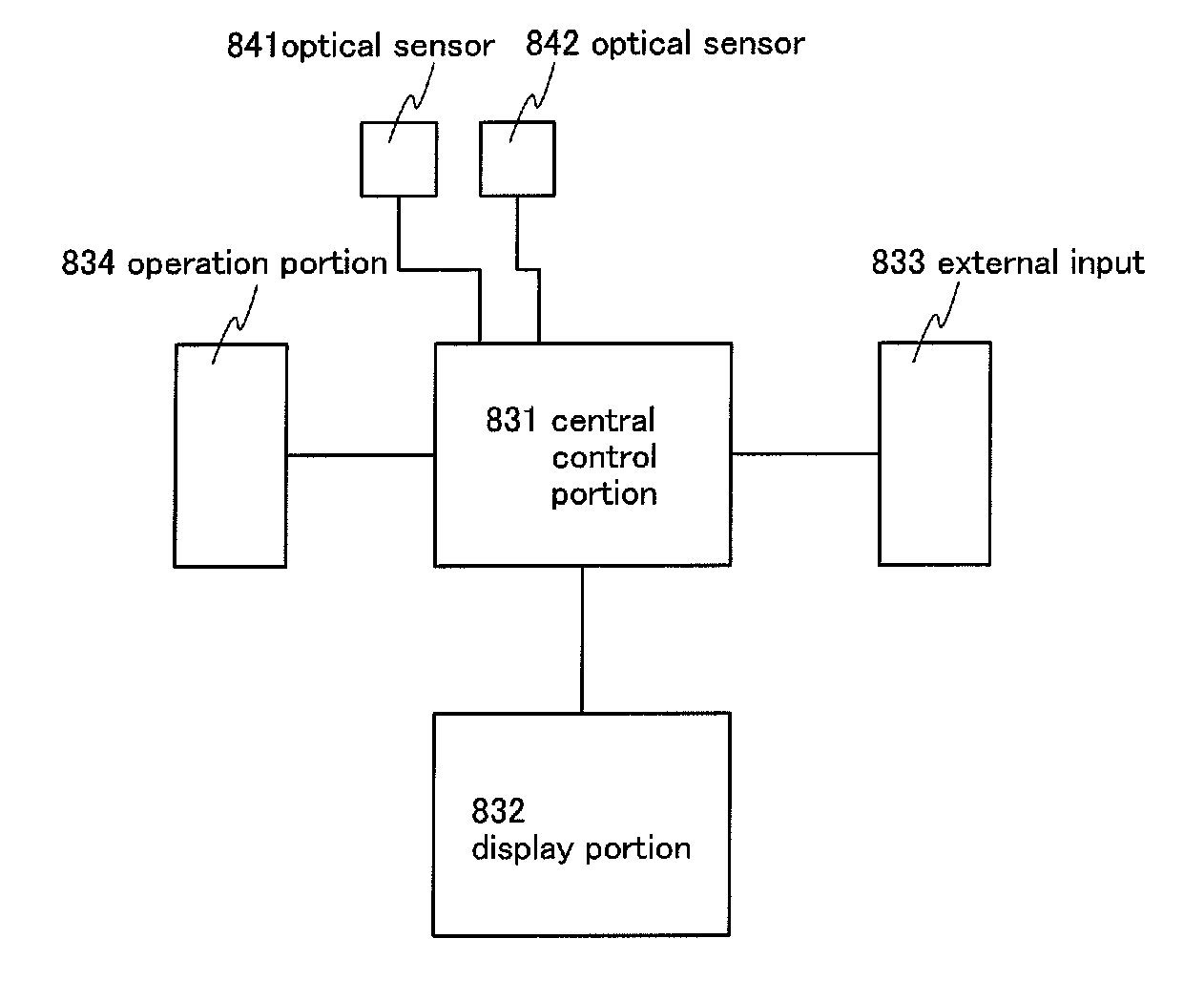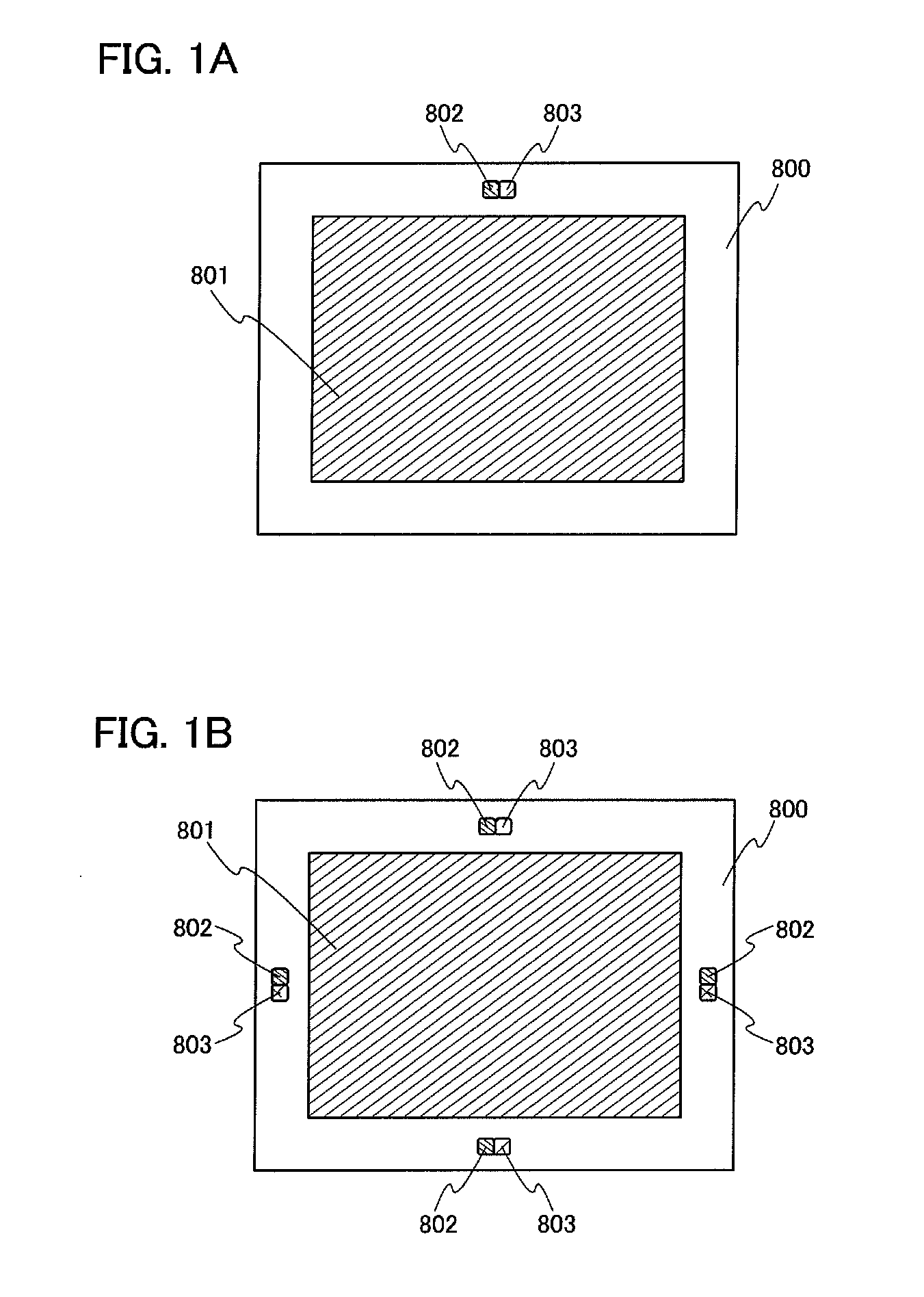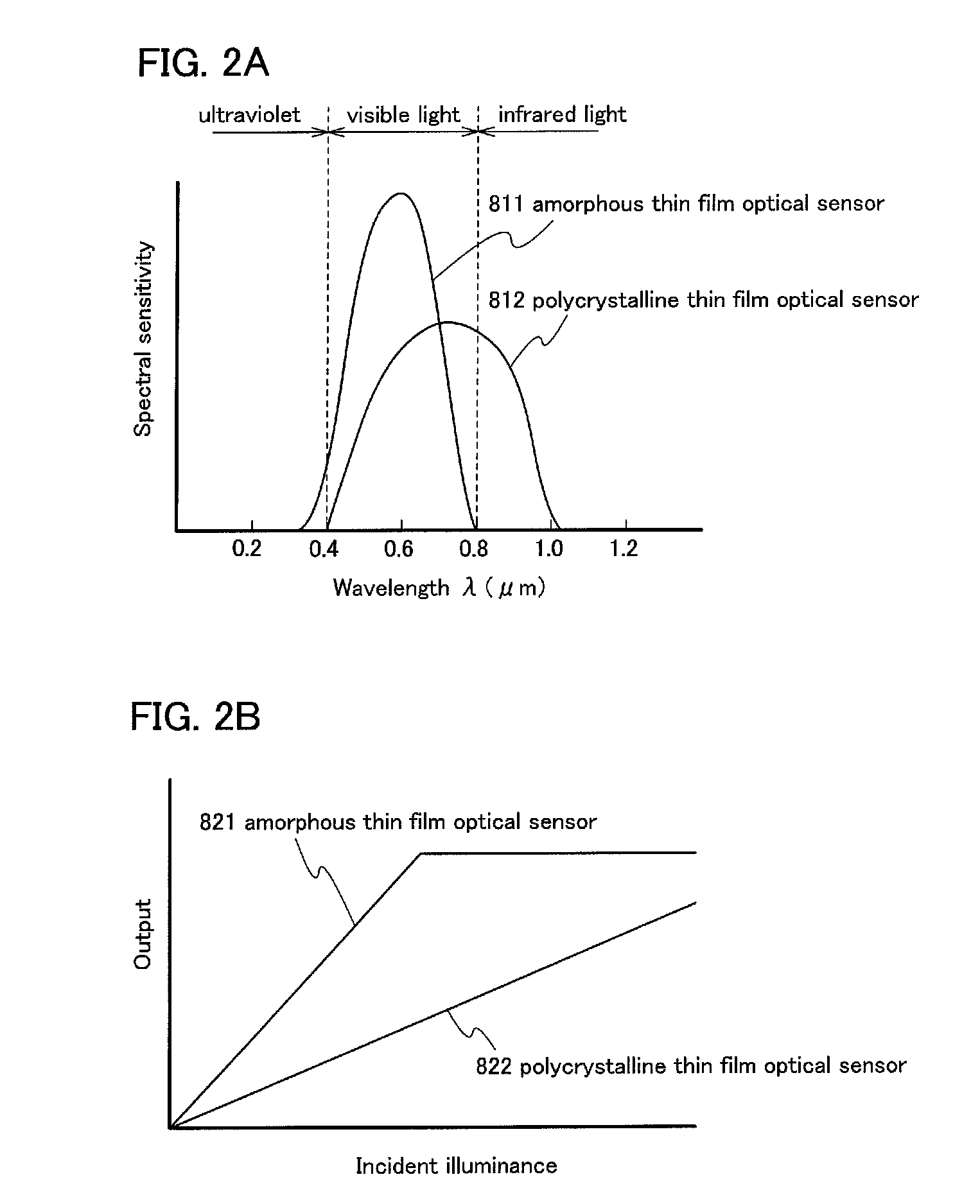Display device including optical sensor and driving method thereof
- Summary
- Abstract
- Description
- Claims
- Application Information
AI Technical Summary
Benefits of technology
Problems solved by technology
Method used
Image
Examples
embodiment 1
[0049]In this embodiment, one embodiment of a display device incorporating an optical sensor will be described. FIGS. 1A and 1B each illustrate a display device 800 incorporating an optical sensor. In FIG. 1A, an optical sensor 802 and an optical sensor 803 are provided in an upper portion outside a display portion 801. In FIG. 1B, a plurality of optical sensors 802 and a plurality of optical sensors 803 are provided around a display portion 801.
[0050]In the optical sensor 802, a photoelectric conversion element includes an amorphous semiconductor, and in the optical sensor 803, a photoelectric conversion element includes a polycrystalline semiconductor. The illuminance around the display device is detected by the optical sensor 802 or the optical sensor 803, and the luminance of the display device is adjusted. For example, when the illuminance around the display device is high, the luminance of the display portion 801 is increased, and when the illuminance around the display portio...
embodiment 2
[0070]In this embodiment, an embodiment of a display device incorporating an optical sensor, which is different from Embodiment 1, will be described.
[0071]In this embodiment, as an example of a display device, a liquid crystal display device will be described with reference to FIG. 4. A display device 220 includes a pixel circuit 221, a display element control circuit 222, and an optical sensor control circuit 223. The pixel circuit 221 has a plurality of pixels 224 arranged in matrix. Each of the pixels 224 includes a display element 225 and an optical sensor 226 or an optical sensor 236.
[0072]The optical sensor 226 is the amorphous thin film optical sensor described in Embodiment 1, and the optical sensor 236 is the polycrystalline thin film optical sensor. FIG. 4 illustrates an example where columns of pixels each including the optical sensor 226 and columns of pixels each including the optical sensor 236 are alternately arranged one by one; however, this embodiment is not partic...
embodiment 3
[0102]In this embodiment, an example of a manufacturing process of the transistor and the optical sensor described in Embodiments 1 and 2 will be described with reference to cross-sectional views of FIGS. 8A to 8D, FIGS. 9A to 9D, FIGS. 10A and 10B, and FIG. 11. A transistor 390 illustrated in FIG. 10B is one type of bottom-gate structures and is also referred to as an inverted-staggered transistor or a channel-etched transistor. An optical sensor 391 is an amorphous thin film optical sensor and includes a PIN photodiode in which a P layer, an I layer, and an N layer formed with amorphous silicon are stacked. An optical sensor 392 is a polycrystalline thin film optical sensor and includes a PIN photodiode in which a P layer, an I layer, and an N layer are formed in one polycrystalline silicon or microcrystalline silicon layer as a photoelectric conversion element. Note that the optical sensor 391 and the optical sensor 392 are designed to detect not light incident from the substrate...
PUM
 Login to View More
Login to View More Abstract
Description
Claims
Application Information
 Login to View More
Login to View More - R&D
- Intellectual Property
- Life Sciences
- Materials
- Tech Scout
- Unparalleled Data Quality
- Higher Quality Content
- 60% Fewer Hallucinations
Browse by: Latest US Patents, China's latest patents, Technical Efficacy Thesaurus, Application Domain, Technology Topic, Popular Technical Reports.
© 2025 PatSnap. All rights reserved.Legal|Privacy policy|Modern Slavery Act Transparency Statement|Sitemap|About US| Contact US: help@patsnap.com



